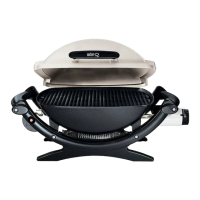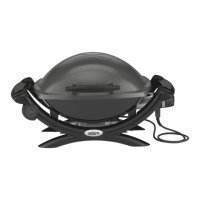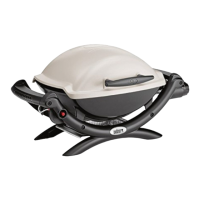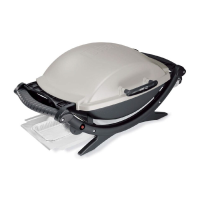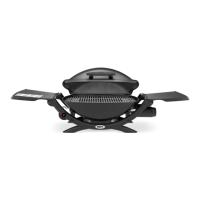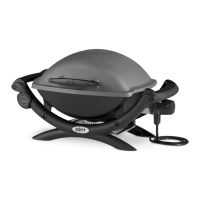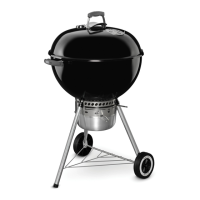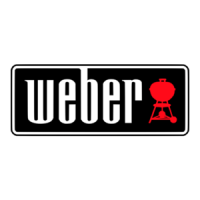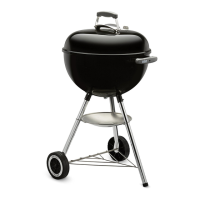PLACE STICKER HERE
LPG Gas Grill Owner’s Guide
41051 07/14/08 LP
NEW ZEALAND
YOU MUST READ THIS OWNERS GUIDE
BEFORE OPERATING YOUR GAS GRILL
DANGER
If you smell gas:
1. Shut off gas to the appliance.
2. Extinguish any open flames.
3. Open lid
4. If odor continues, keep away from the
appliance and immediately call your gas
supplier or your fire department.
Leaking gas may cause a fire or explosion
which can cause serious bodily injury or
death, or damage to property.
WARNING:
1. Do not store spare LPG cylinder within
10 feet (3m) of this appliance.
2. Do not store or use petrol or other
flammable liquids or vapors within
25 feet (8m) of this appliance.
WARNING: Follow all leak-check
procedures carefully in this manual prior
to barbecue operation. Do this even if the
barbecue was dealer-assembled.
NOTICE TO INSTALLER: These instructions
must be left with the owner and the owner
should keep them for future use.
THIS GAS APPLIANCE IS DESIGNED FOR
OUTDOOR USE ONLY.
WARNING: Do not try to light this
appliance without reading the "Lighting"
Instructions section of this manual.
This instruction manual contains important information necessary for the proper assembly
and safe use of the appliance.
Read and follow all warnings and instructions before assembling and using the appliance.
Follow all warnings and instructions when using the appliance.
Keep this manual for future reference.
WARNINGS
Follow all leak-check procedures carefully in this
manual prior to barbecue operation. Do this even if
the barbecue was dealer-assembled.
Do not store a spare or disconnected propane
cylinder under or near this barbecue.
Improper assembly may be dangerous. Please
carefully follow the assembly instructions in this
manual.
After a period of storage, and/or nonuse, the Weber
®
gas barbecue should be checked for gas leaks and
burner obstructions before use. See instructions in
this manual for correct procedures.
Do not operate the Weber
®
gas barbecue if there is a
gas leak present.
Do not use a flame to check for gas leaks.
Combustible materials should never be within 24
inches (63.5cm) of the back or sides of your Weber
®
gas barbecue.
Your Weber
®
gas barbecue should never be used by
children. Accessible parts of the barbecue may be
very hot. Keep young children away while it is in use.
You should exercise reasonable care when operating
your Weber
®
gas barbecue. It will be hot during
cooking or cleaning and should never be left
unattended, or moved while in operation.
Should the burner go out while in operation, turn the
gas valve off. Open the lid and wait five minutes before
attempting to relight, using the lighting instructions.
Do not use charcoal or lava rock in your Weber
®
gas
barbecue.
Never lean over an open grill or place hands or fingers on
the front edge of the cooking box.
Should a grease fire occur, turn off the burner and leave lid
closed until fire is out.
Do not enlarge valve orifice or burner ports when cleaning
the valve or burner.
The Weber
®
gas barbecue should be thoroughly cleaned on
a regular basis.
Use the regulator that is supplied with your Weber
®
gas
barbecue.
Propane gas is not natural gas. The conversion or attempted
use of natural gas in a propane unit or propane gas in a
natural gas unit is dangerous and will void your warranty.
Do not attempt to disconnect any gas fitting while your
barbecue is in operation.
Use heat-resistant barbecue mitts or gloves when operating
the barbecue.
